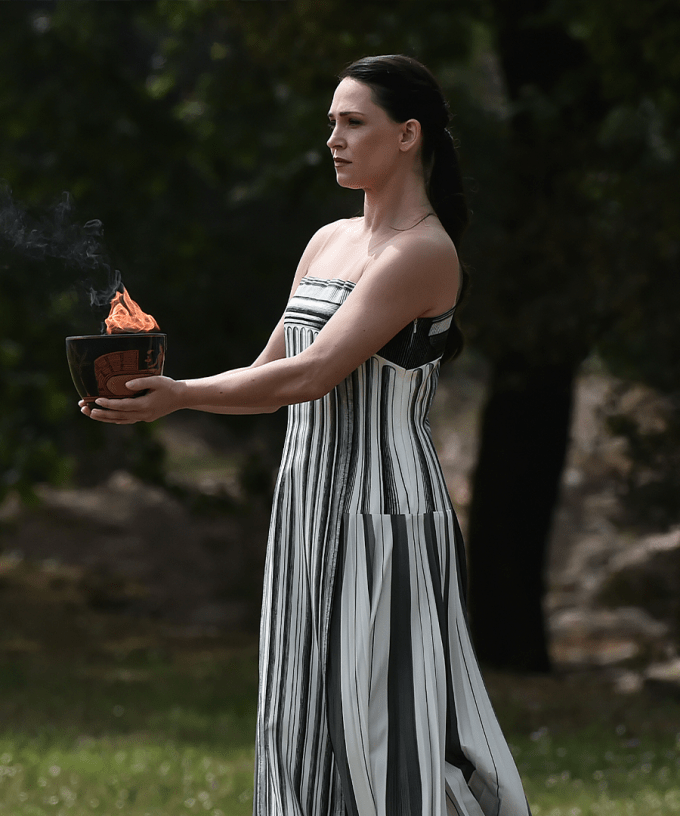The flame destined for the Paris Olympics was ignited on Tuesday at the ancient site of the games in southern Greece, despite cloudy skies hindering the traditional lighting method. An actress, portraying an ancient Greek priestess, utilised a backup flame from Monday’s rehearsal, stored in a replica ancient Greek pot, due to the absence of sunlight.

ATHENS, GREECE – APRIL 16: Greek actress Mary Mina, playing the role of the High Priestess, lights the torch during the flame lighting ceremony for the Paris 2024 Summer Olympics at the Ancient Olympia archeological site, birthplace of the ancient Olympics in southern Greece on April 16, 2024 in Olympia, Greece. (Photo by Milos Bicanski/Getty Images)
The flame will embark on a 5,000-kilometre journey through Greece before reaching Athens for the handover to Paris Games organisers on April 26.
IOC President Thomas Bach hailed the event as a blend of homage to ancient Olympia and a symbol of hope for the future. Security was tightened around the site after previous protests during Olympic lighting ceremonies.
The first torchbearers, Greek rower Stefanos Douskos and French swimmer Laure Manaudou, marked the event’s significance. However, IOC politics emerged, criticising track and field leader Sebastian Coe for deviating from Olympic tradition by offering prize money to gold medalists $US50,000 ($78,000) to each of its gold medalists in Paris.











